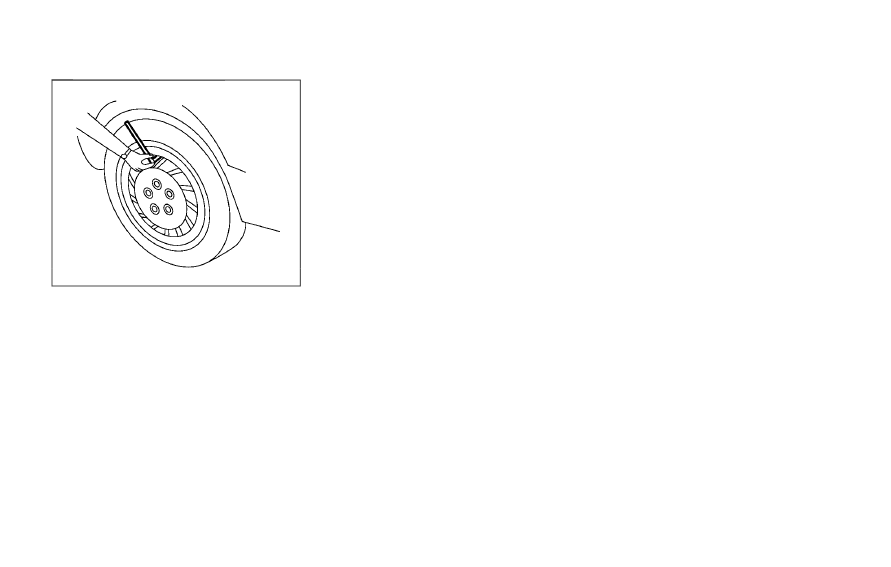Nissan Juke (2017 year). Instruction - part 23

SDI1949
Checking the tire pressure
1. Remove the valve stem cap from the
tire.
2.
Press the pressure gauge squarely
onto the valve stem. Do not press too
hard or force the valve stem side-
ways, or air will escape. If the hissing
sound of air escaping from the tire is
heard while checking the pressure,
reposition the gauge to eliminate this
leakage.
3.
Remove the gauge.
4.
Read the tire pressure on the gauge
stem and compare it to the specifica-
tion shown on the Tire and Loading
Information label.
5.
Add air to the tire as needed. If too
much air is added, press the core of
the valve stem briefly with the tip of
the gauge stem to release pressure.
Recheck the pressure and add or
release air as needed.
6.
Install the valve stem cap.
7.
Check the pressure of all other tires,
including the spare.
Do-it-yourself
8-31